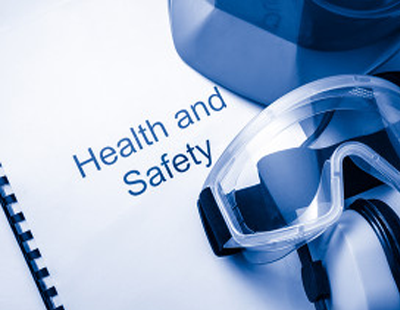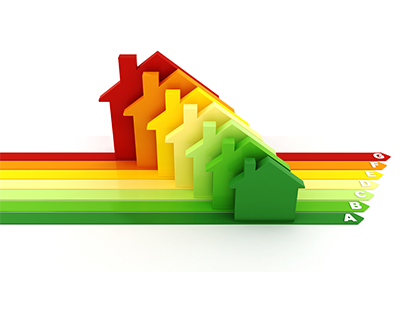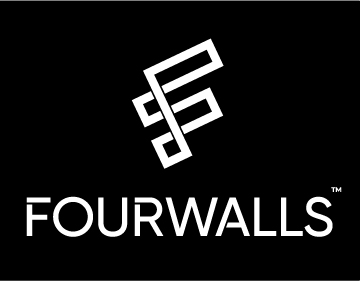Landlords are being urged to step up and ensure that all rented properties and accommodation meet recent laws relating to carbon monoxide alarms.
The legislation, which came into effect in Autumn 2015, states that smoke alarms must be installed on every floor of a property and be tested ahead of any new tenancy, with carbon monoxide alarms placed in every room containing a solid-fuel burning appliance, including wood burners and open fires.
However, a survey we carried out identified that only 6% of students are aware that their digs is likely to need a CO alarm whilst only a third (32%) of student accommodation is believed to have a working CO alarm.
To stop students being at risk from the 'silent killer', landlords and letting agents are being reminded of their obligations to install lifesaving detectors.
Servicing of appliances and alarms should also be high on the agenda as new tenants move in, as well as the installation of alarms.
Our survey discovered that just one in eight people in rented accommodation were aware of a landlord’s duty to provide a carbon monoxide alarm in rooms with a solid-fuel burning appliance in their properties. This contrasts with the overwhelming four in five people who are aware that a smoke alarm must be provided.
Renters were also shown in the poll to be unaware of a landlord’s responsibility to provide an up to date gas safety certificate. Only four in 10 had asked for this when moving into rented accommodation.
Our research also reveals a worrying lack of knowledge among the public of how to detect CO, the so-called ‘silent killer’.
When asked how you would know the gas is present, 28% of people believe you can smell it, 8% think you can taste it, 6% answered see it, 2% insist you can hear it, while 1% of those asked reckon you are able to touch it.
Key indicators that carbon monoxide is present in your property and things to warn your tenants to look out for are: if the cooker flames are yellow or orange, sooty marks on walls around boilers, stoves or gas fire covers, pilot lights that frequently go out or there is increased condensation inside windows.
Carbon monoxide myth-busters
True or False: It is possible to smell carbon monoxide being emitted in the home.
Answer: False. Carbon monoxide is both colourless and odourless so is almost impossible to detect without an alarm.
True or False: Carbon monoxide poisoning is extremely difficult to diagnose.
Answer: True. The symptoms of carbon monoxide poisoning are similar to that of flu so it makes diagnosis very difficult. They include; headaches, nausea, dizziness, tiredness, confusion and eventually loss of consciousness.
Currently, GPs don’t all have access to equipment to check carbon monoxide levels and the only way to the presence of carbon monoxide is with a blood test. Some 46% of GPs have seen patients with carbon monoxide poisoning symptoms but only 18% say that they wouldn’t consider CO poisoning as a diagnosis. Find out more about the symptoms of CO here.
True or False: Carbon monoxide won’t leak if I have new gas appliances or if I have my appliances serviced regularly.
Answer: False. Although having brand new gas appliances, such as a new hob or boiler, will significantly reduce the chances of them leaking carbon monoxide it doesn’t rule them out.
CO can be emitted from appliances new or old and if you’re worried you should see your GP. Regular servicing of your gas appliances is the best way to reduce the risk of your property being subject to a CO leak and having an alarm fitted is the best way of detecting if and when something has gone wrong.
True or False: Carbon Monoxide can only leak from my boiler.
Answer: False. Carbon Monoxide can leak from any gas appliance in your property. This could include an oven, gas fire, or a boiler.
CO is produced when there is not enough oxygen to form carbon dioxide. For example, when a flame is burnt in a poorly ventilated space. This is why it is extremely dangerous to barbecue in a tent as there is often too little oxygen for carbon dioxide to be produced and so carbon monoxide is released instead.
One of the main things to look out for in your property are if flames on gas appliances burn a yellow or orange colour rather than blue as this could mean that they are not burning properly.
For a more information on how you can keep your tenants safe from the dangers of Carbon Monoxide, visit this webpage.
*Peter Southcott is managing director of CORGI HomePlan
**This article has been updated to reflect the fact that carbon monoxide alarms are legally required in rooms with a solid-fuel burning appliance.

















%20-%20IMAGE%20Client%20Accounting%20%E2%80%93%20what%20are%20your%20options.jpg)


.png)
.png)
.png)


%20A%20property%20tale%20for%20our%20times.png)







Join the conversation
Jump to latest comment and add your reply
Whilst we insist on carbon monoxide alarms in all rental properties the legislationstrangely only requires it in properties with solid fuel such as coal or wood burning appliances. Whilst some landlords say that as it's not law they do not need one, the cost of one at £15-£25 is a small price to pay for tenant safety. Thankfully there may be an amendment shortly covering gas appiances as well.
For a feature headed Carbon Monoxide Myths this is amazing. Or is that what you here are some carbon monoxide myths. It is not law to provide a CO detector and although you might like to spend your clients money they can come back at you as there is no require to fit one the same as there is no requirement to do many things. Your survey "discovered that just one in eight people in rented accommodation were aware of a landlord’s duty to provide a carbon monoxide alarm in their properties" so 1 in 8 are wrong so 7 in 8 are right, which is a good thing not a bad thing. There is no requirement unless solid fuel. I think your article writer needs to swat up a bit and get re writing a factual piece not misleading information about myths which is EXACTLY what they are doing .
Unfortunately I had a disagreement with a heating engineer recently from a large national firm who was insistent that a CO alarm was required by law as that was what their training department said.He was hesitant to sign off the gas cert. I printed out the legislation and gave it to him. Is it just a way of making money or a genuine error?
If there is a gas appliance, there must be a carbon monoxide alarm. Ideally, one next to each.
No - You are wrong. This is NOT the case. Only for a solid fuel appliance, only for open fires and woodburners NOT gas !!!!
What happened there ?
See:
https://www.gov.uk/government/publications/smoke-and-carbon-monoxide-alarms-explanatory-booklet-for-landlords/the-smoke-and-carbon-monoxide-alarm-england-regulations-2015-qa-booklet-for-the-private-rented-sector-landlords-and-tenants
Looks like the software blew a fuse!
SCN - you are correct. It is just good practise.
'Gas is not a solid fuel and so there is no requirement to fit one near a gas boiler. It is still advisable as best practice however. ' It's a potential killer, if the boiler is faulty. Same principle as Legionella testing. It is just a risk assessment, not a legal requirement.
So with respect, David Bennett, your previous comment "If there is a gas appliance, there must be a carbon monoxide alarm" - was incorrect.
I agree with you completely that it's good practice, but quite simply it is not law.
Also why are EAT publishing articles that suggest it is?
Here we insist on smoke and carbon monoxide in all properties that we let whether managed or not, my view is that if a landlord scrimps on £15 before we start, do I want that landlord? Also I suspect that there have been more deaths from carbon monoxide poisoning from incorrectly fitted/maintained gas appliances than there have from solid fuel burners? Better safe than sorry!
I agree that the law at the moment only makes CO alarms compulsory in private rented property with solid fuel. However, it seems those who have commented find this a bit silly. Sensibly perhaps the law is due to be changed very shortly to cover gas. However, why only private landlords? What about Council tenants and social landlords? What about owner/occupiers? What about people working in shops, offices and factories? They all have heating which is mostly powered by carbon based fuels such as gas, coal, oil, petrol, diesel or wood etc.
There is another part of the law that needs clarifying and that's the landlords' gas safety check and certificate. At the moment there are two duties on landlords:-
1. A duty to keep all gas appliances etc. that the landlord owns or controls in a safe condition and
2. The annual gas safety check and certificate.
Naturally landlords tend to concentrate on the second because it comes up annually. However, the gas safety check and certificate are not as helpful as they could be because this check does not require either a service or a test for CO (which cannot be sensed using human senses) using equipment to test for CO.
So the independent registered charity, CO-Gas Safety has suggested an amendment of the Gas Regulations which would make it mandatory to undertake either a service or a check of the flue gasses using equipment to test for CO.
We have support for this from the Dominic Rodgers Trust, the Katie Haines Memorial Trust, Holiday Travel Watch and the National Landlords Association.
This is a bit technical but for those who like techie stuff we have drafted this as follows:-
'Person undertaking the check must either undertake a service according to manufacturer’s instructions or, following procedures outlined in BS7967 part 4 (or succeeding similar standard), use a Flue Gas Analyser or similar equipment complying with EN50379 (or succeeding similar standards) to measure the combustion gasses for PPM (Parts Per Million) of CO and also the CO/CO2 ratio and make and keep a record of those measurements provided they are within the recommendations made by the manufacturer. If the measurements are not within the specifications made by the manufacturer, a full service must be undertaken and checked, using a flue gas analyser or similar equipment as above. Then a record of those measurements must be made and kept.
Person undertaking the check will also ensure that at least one CO alarm to EN 50291 (or succeeding similar standard) is fitted in the property, in an approved position with reference to the standard, is within date marked on the CO alarm and is working effectively.’
Any comments would be gratefully received so please do email me, Stephanie office@co-gassafety.co.uk
Ref carbon monoxide detectors? In the US, these detectors are placed at low levels ( ie just above skirting board height) this I understood is because CO2 is a heavy gas and accumulates at floor level and does not rise like many other gases. I see here in the UK these CO2 alarms fitted at top of door height, on the ceilings? Im no chemist so welcome expertise from anyone on factual advice on nature of CO2 characteristics in this issue, if in fact it lies low then alarms at ceiling height will prove ineffective and possibly too late to prove useful in detecting this invisible killer.
Please login to comment